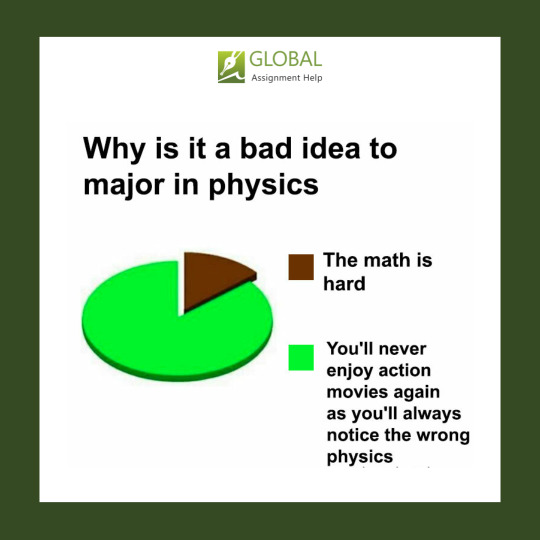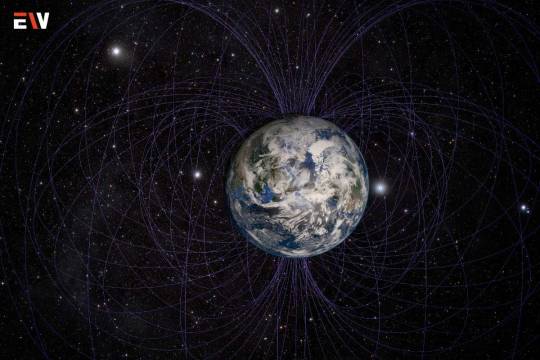#physicsfun
Text
This string shooter uses two wheels on motors to push a string forward while a tube guides the string back through the wheels, creating a constant loop that appears to defy gravity & demonstrates wave phenomena.
The string shooter is a fascinating device that can be used to demonstrate various physics concepts, such as air drag, wave phenomena, and hydraulic jump. It consists of a pair of counter-rotating wheels that propel a closed loop of string at a constant speed. The string loop forms a stable shape that remains suspended in the air, seemingly defying gravity. How does this device work and what are the physics behind it?
One way to understand the string shooter is to consider the forces acting on each segment of the string loop. The string is subject to three main forces: tension, gravity, and air drag. Tension is the force exerted by the wheels on the string, which keeps it moving forward. Gravity is the downward force due to the mass of the string, which tends to make it fall. Air drag is the resistive force due to the interaction of the string with the surrounding air, which opposes its motion.
The balance of these forces determines the shape and stability of the string loop. At low speeds, gravity dominates over tension and air drag, and the string hangs down like a pendulum. As the speed increases, tension becomes more important and the string rises up. At some critical speed, tension and gravity cancel out, and the string becomes horizontal. This is similar to what happens when a rope is spun around by hand.
However, at higher speeds, something interesting happens. The string loop does not remain horizontal, but bends upward into a self-supporting loop. This is because air drag becomes significant and creates a lift force on the string. The lift force is perpendicular to both the direction of motion and the direction of gravity, and acts as a centripetal force that keeps the string in a circular path.
The shape of the string loop can be described mathematically by using some simplifying assumptions. One assumption is that the string has a negligible radius and mass compared to its length and speed. Another assumption is that the air drag is proportional to the square of the speed and depends on the angle between the string and the airflow. Under these assumptions, one can derive a differential equation that relates the curvature of the string to its speed and angle.
The solution of this equation reveals some interesting features of the string loop. One feature is that there is a critical point on the loop where the speed of the string matches the speed of sound in air. This point separates two regions: a supercritical region where the speed of the string is greater than the speed of sound, and a subcritical region where it is lower. In the supercritical region, any disturbance on the string cannot propagate upstream, while in the subcritical region, it can.
Another feature is that there are two types of solutions for the shape of the loop: regular solutions and singular solutions. Regular solutions are smooth and continuous, while singular solutions have a sharp turn at the critical point. The regular solutions are analogous to hydraulic jumps in fluid dynamics, where a fast-moving stream transitions to a slow-moving one through a shock wave. The singular solutions are more realistic and correspond to what is observed experimentally.
The string shooter is an example of how simple devices can reveal complex physics phenomena. It shows how air drag can create lift and stabilize a loop of light string in mid-air. It also shows how supersonic and subsonic regimes can coexist on a single object, creating a critical point where waves cannot propagate. The string shooter is not only fun to watch, but also educational to analyze. I hope you enjoyed reading & learning about the string shooter. 😊🙏
8 notes
·
View notes
Text






Via only for physics
121 notes
·
View notes
Text
What's your say should I major in PHYSICS? 😨

#physics#physicsmemes#physicsfun#physicsjokes#physicsfacts#physicsclass#physicslovers#theoreticalphysics#physicsstudent#physicsisfun#physicslover#students#tumblr memes#meme#memes#dank memes#memesdaily#shitpost#fresh memes#dankest memes#lol#lmao#humor#funny#funny memes#relatable#relatable memes#science#college humor#university studyblr
19 notes
·
View notes
Text

QUANTUM MECHANICS: A TEXTBOOK FOR UNDERGRADUATES, SECOND EDITION by Jain
• Incorporates detailed historical introduction to quantum mechanics
• Comprises sections on Time Variation of the Expectation Value of An Observable and Ehrenfest’s Theorem in the respective chapter
• Includes several new numerical problems as well as solutions/hints to the existing exercise problems
For more information log on to http://social.phindia.com/nIGLfQny
2 notes
·
View notes
Photo

Ha #Repost @drunk.physicist ・・・ Well... . . . #physicsfacts #physicsfun #physics #physicist #drunkphysicist #einstein #theoryofrelativity #relativity #alberteinstein #the_physics_factory #timedilation #photon #speedoflight #blackholes #gravitationalwaves #universe #space #time #spacetime #spacescience #sciencememes #science #sciencefacts https://www.instagram.com/p/ChB4XMouxD3/?igshid=NGJjMDIxMWI=
#repost#physicsfacts#physicsfun#physics#physicist#drunkphysicist#einstein#theoryofrelativity#relativity#alberteinstein#the_physics_factory#timedilation#photon#speedoflight#blackholes#gravitationalwaves#universe#space#time#spacetime#spacescience#sciencememes#science#sciencefacts
2 notes
·
View notes
Text

light'n Race isn't just about speed, it's about strategy and understanding the physics of light ! Learn through play - the best kind of learning.
0 notes
Text
Flat Earth Gravity 101 part 1
Ever wondered what it would take for a flat Earth to have the same gravitational pull as our spherical home? Let's dive into a quirky thought experiment that merges fantasy with physics.
Gravity 101: On our globe, gravity pulls us towards the center, making us stick to the surface no matter where we stand. But what if the Earth was not a sphere, but a flat, infinite plane? How thick would this plane need to be to mimic the gravity we know and love?
Using the average density of Earth (5510 kg/m3) and some nifty physics equations, we find a surprising answer. For a flat Earth to have the same gravitational pull (9.81 m/s2), it would need a thickness of about 4,246 kilometers. That's roughly a third of the actual Earth's radius!
Why It Matters: This mental gymnastics isn't just for fun. It challenges us to understand gravity in new ways and appreciate the peculiarities of our three-dimensional, spherical world.
Thought-Provoking Follow-Ups:
How would weather behave on a flat Earth?
What would happen to day/night cycles and seasons?
How would our perception of space and distance change on an infinite plane?
This exploration isn't just about questioning the shape of the Earth—it's about expanding our understanding of physics in the unique world we inhabit. Let's keep questioning, exploring, and learning!

0 notes
Text
Devin Playing with Water and Pepper l Devins World
youtube
Devin, an avid young scientist, explores the fascinating world of physics by conducting a captivating experiment with water and pepper. Watch as he demonstrates the magic of surface tension and cohesion in "Devin's World."
#ScienceExperiment#WaterAndPepper#DevinTheScientist#PhysicsFun#STEMKids#LearningThroughPlay#ScienceExploration#YoungScientist#HandsOnLearning#EducationalFun#Youtube
0 notes
Text
Turbulent Plasma: Uncovering the Source of the Universe’s Magnetic Fields

According to findings from Columbia University, the origin of magnetic fields throughout the cosmos may be in turbulent plasma. Their research shows that these plasmas, which are prevalent in a variety of contexts, have the ability to spontaneously generate and enhance magnetic fields, illuminating the mechanism by which magnetic fields can extend over enormous distances.
Magnetic fields’ origin has long been a subject of discussion. The fresh study provides hints about their genesis
Your refrigerator isn’t the only appliance with magnets on it. Additionally magnetized are the sun, the moon, the stars, galaxies, and intergalactic space. The more areas in the universe that scientists have searched for magnetic fields, the more of them they have discovered. But the reason why that is the case and the source of those magnetic fields have remained a mystery and a focus of research.
NASA’s flying Stratospheric Observatory for Infrared Astronomy (SOFIA) observatory captured the magnetic field in the Whirlpool Galaxy (M51), which was superimposed on a Hubble telescope image of the galaxy. The picture displays infrared photos of dust particles in the M51 galaxy. Although it is also being tugged in the direction of the next galaxy to the right of the frame, its magnetic orientation mostly matches the spiral form of the galaxy. Credit: NASA, ESA, S. Beckwith (STScI), and the Hubble Heritage Team (STScI/AURA); NASA, the SOFIA scientific team, and A. Borlaff.
Magnetic fields are frequently taken for granted. Despite being all around us, we cannot see them. They span the stars, planets, and galaxies as well as sticking our magnets to the refrigerator. Scientists are still unsure of the magnetic fields’ genesis. Particularly in the early cosmos when matter was scarce and cold, how did they initially form? Recent findings illuminate how that would have been possible.
According to a recent study that was published in Physical Review Letters, a group of scientists from Columbia University conducted simulations to explain the occurrence. The experiment demonstrated that magnetic fields can be created from nothing and grown exponentially through turbulence, the random and chaotic motion of plasma particles.
Evolution of Special Relativistic Turbulent Plasma
youtube
Knowledge of the Magnetic Field’s Origins
A fresh study from Columbia University researchers sheds light on the origin of these fields. Models were utilized by the research team to demonstrate that magnetic fields can emerge spontaneously in turbulence.
In addition to creating new magnetic fields, their simulations demonstrated that the turbulent plasmas can also increase magnetic fields once they have already been created. This clarifies how magnetic fields that initially form on small sizes can occasionally later spread across great distances.
a composite image showing the emergence and development of magnetic fields in turbulent plasma, from small-scale weak fields (top left) to large-scale strong fields (bottom right). Authorized by Columbia University
In the purest, vast, and remote regions of our cosmos, swirling plasma particles in tumultuous motion can spontaneously give birth to new magnetic fields, according to recent research, Sironi said.
Curious to learn more? Explore our articles on Enterprise Wired
#magneticfield#science#physics#magnet#magnetic#magnetism#earth#physicsfun#physicstoy#scienceisawesome#magnets#levitation#love#gravity#art#Youtube
0 notes
Text
#ScienceExploration#ElectromagneticForce#CodeHighlights#TechWonders#PhysicsFun#ScienceFacts#STEMEducation#ScienceInnovation#Electromagnetism#PhysicsExplained#ScienceLovers#LearningScience#ScienceCarousel#EducationalContent#ScienceNerd#ScienceIsCool#ExploreTheUniverse#ScienceForAll#STEMLearning#PhysicsKnowledge#ScienceEnthusiast#DiscoverScience#PhysicsFascination#ScienceCommunity#STEMTopics#PhysicsCarousel#EducationalCarousel#ElectromagneticSpectrum#PhysicsWonder#ScienceCuriosity
0 notes
Text
What's Your Story on Monday?

#physics#physicsmemes#physicsfun#physicsjokes#physicsfacts#physicsclass#physicslovers#theoreticalphysics#physicsstudent#physicsisfun#physicslover#students#tumblr memes#meme#memes#dank memes#memesdaily#shitpost#fresh memes#dankest memes#lol#lmao#humor#funny#funny memes#relatable#relatable memes#science#college humor#university studyblr
3 notes
·
View notes
Text
instagram
Study Physics Abroad⚛️
Physics is the natural science that studies matter, its fundamental elements, its mobility and behaviour in space and time, as well as the associated phenomena of energy and force. Physics is one of the most fundamental scientific fields, with the primary purpose of understanding how the universe functions.
Despite competition for conventional research employment, prospects for physicists in applied research, development, and related technological domains should be favourable.
Overall employment of physicists and astronomers is expected to increase by 8% between 2020 and 2030, roughly in line with the national average.
EXPLORE MORE
Do you feel confuse about which career path to chose? Feel Free To Contact With ED4WO. Our industry-certified counselors are ready to assist you.
For further information, please call +91 8010-409-409 or visit https://ed4wo.com/.
#physics#quantumphysics#physicsfun#mathematics#science#astrophysics#biology#mathematical#cosmology#physicist#scientist#physicists#quantumuniverse#sciencelover#scienceiscool#einstein#alberteinstein#sciencejokes#scientistlife#ED4WO#Instagram
0 notes
Text
galilean invariance ‼️
galileo galilei postulated that in EVERY inertial reference frame, the laws of motion held up.
this means that if you are stationary or moving at a constant speed, newton's laws will apply. for example, say you were inside of a train carriage that had no windows and went at a constant speed, and you performed a newton's laws experiment. the results of these experiments alone could not tell you if the carriage was moving or not, because a person who performed the same experiment in a stationary classroom would get the same results.
#physics#science#stem#physics chat#physicslovers#scienceiscool#nasa#galileo#galileo galilei#galilean invariance#physicists#physicist#theoretical physics#motion#physicsfun#universe
1 note
·
View note
Photo

Come check out our latest blog “The Parallels Between Art & Physics” on our site www.shopartism.com, and have yourself an interesting read! Link in bio . . . . . . #art #artwork #artist #artistsoninstagram #artgallery #artoftheday #artworks #physics #physicsfun #physicsmemes #physicsfacts #physicslovers #physicswallah #physicsnotes #blog #blogger #foodblogfeed #fashionblog #blogpost #instablog9ja #travelblog https://www.instagram.com/p/CqHOV_Cp_wN/?igshid=NGJjMDIxMWI=
#art#artwork#artist#artistsoninstagram#artgallery#artoftheday#artworks#physics#physicsfun#physicsmemes#physicsfacts#physicslovers#physicswallah#physicsnotes#blog#blogger#foodblogfeed#fashionblog#blogpost#instablog9ja#travelblog
0 notes
Photo

Do you know what our second-best selling tee is? For all you photographers out there! Get one! - #submersibletees #dslrcamera #cameratshirt #cameragraphic #howacameraworks #physics #physicsfun #lens #concavelens #schoolphysics #refractionoflight #shoptshirts #shoptillyoudrop #shopfromhome #onlinestore #secureshopping #techgeek #techjunkie #photographer #dronephotography #nikoncamera #lineillustration #minimalillustration #minimalgraphics #understatedtee #graphictees (at Oshiwara Andheri) https://www.instagram.com/p/Cn3x_qFK4jR/?igshid=NGJjMDIxMWI=
#submersibletees#dslrcamera#cameratshirt#cameragraphic#howacameraworks#physics#physicsfun#lens#concavelens#schoolphysics#refractionoflight#shoptshirts#shoptillyoudrop#shopfromhome#onlinestore#secureshopping#techgeek#techjunkie#photographer#dronephotography#nikoncamera#lineillustration#minimalillustration#minimalgraphics#understatedtee#graphictees
0 notes